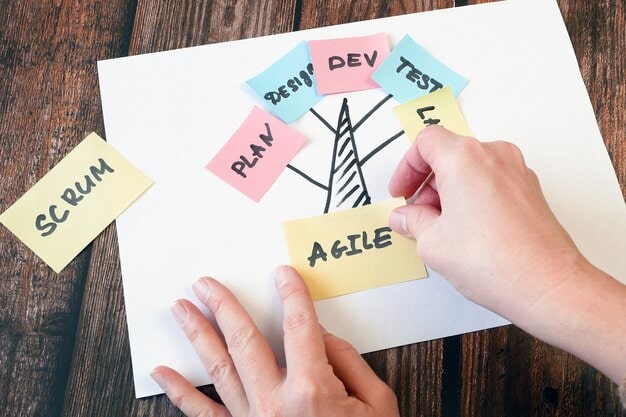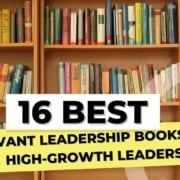From Factory Floors to Software Development: Tracing Agile’s Toyota Roots
Agile methodology is everywhere in software development today. (1) It’s like a magic recipe that helps teams work better. But did you know it all started on factory floors at Toyota? Yep, that’s true. When I learned about this connection, I felt like I was peeking into a treasure chest of knowledge. In this article, I’m going to share how Toyota’s way of doing things opened the door for Agile practices we see in tech today.
Key Takeaway
- Agile has roots in Toyota’s Production System, focusing on waste elimination and continuous improvement. (2)
- Lean principles guide both manufacturing and software development, emphasizing customer value. (3)
- The Agile transformation at Toyota shows how old methods can adapt to modern challenges. (4)
The Roots of Agile: Toyota’s Production System

Agile methodology finds its beginnings in the Toyota Production System (TPS). This system came about in the 1950s thanks to a fellow named Taiichi Ohno. He wanted to make cars while wasting as little as possible. This meant getting things done Just-in-Time (JIT) so that parts arrived exactly when they were needed. It’s like when you order pizza and want it to show up at the perfect time—hot and ready. TPS focuses on continuous improvement, or kaizen, which is all about looking for ways to do things better every day. Isn’t that a smart way to work?
When Toyota made cars, they didn’t just build them like everyone else. They thought about how to make each step better. They also believed in teamwork. Workers could stop the line to fix problems, which is kind of like saying, “Hey, let’s solve this together before moving on” This idea of collaboration is also a big part of Agile practices today.
Lean Principles and Agile Methodology
Lean principles are like the wise older sibling of Agile. They help teams focus on what really matters—value for the customer. Just like how Toyota wanted to make the best cars for people, Agile wants software teams to create what customers truly need. Lean thinking helps spot waste and inefficiencies in the process. If you think about a big messy room filled with toys, Lean helps you organize it so you can find your favorite one faster.
In software development, this means teams work in short cycles, often called sprints. They build small pieces of software, test them, and get feedback. Think of it like building a Lego castle one block at a time—adding a piece, looking at it, and deciding if it fits your vision. That’s how Agile teams operate. They want to keep improving their product based on what users want, just like Toyota did with their cars.
The Scrum Framework: Agile’s Favorite Tool

Scrum is a popular framework within Agile that helps teams work together. It’s like a game plan for a soccer team. Each player has a role, and they work towards the goal together. In Scrum, there are specific roles, like the Scrum Master who helps the team stay on track. This role is similar to a coach, making sure everyone plays well together.
Scrum also uses meetings called “ceremonies” to keep the team aligned. For example, there’s a meeting called Sprint Planning, where the team decides what they’ll work on next. It’s like a team huddle before the big game. They discuss what they can accomplish in a fixed time frame, usually two weeks. And at the end of each sprint, they have a Retrospective meeting to talk about what went well and what could be improved. This focus on teamwork and constant feedback is very much in line with Toyota’s way of doing things.
Agile Transformation at Toyota: A New Era
Toyota didn’t just stop with the Production System. They also embraced Agile in their IT departments. This transformation helps them be faster and more efficient. Imagine if you could build a toy car and fix it immediately if something went wrong. That’s what Agile allows Toyota to do—they can respond quickly to changes, which is super important in today’s fast-paced world of technology.
Toyota uses Agile frameworks like Scrum while keeping their TPS principles. (5) They want to create solutions quickly and effectively. The company encourages a culture of continuous learning, showing that they believe in improving every day. Just like when you practice a sport and get better over time, Toyota aims to build that same idea into their teams.
Bringing Lean Principles to Software Development
The journey from Toyota’s factory floors to software development is fascinating. Lean principles have been adapted to create Agile practices that are now used in many industries. (6) This means that Agile isn’t just for tech anymore, it’s helping companies in healthcare, education, and finance.
Agile practices like Kanban help teams visualize their work. (7) It’s like a colorful chart that shows what everyone is doing. This visual management is similar to how Toyota used boards to track their production steps. Teams can see what needs to be done, what’s in progress, and what’s finished—all at a glance. It’s a straightforward way to keep everyone informed.
The Importance of Customer Feedback Loops
Agile is all about keeping the customer happy. Toyota knew that if they wanted to make great cars, they needed to listen to what people wanted. That’s why they built feedback loops into their processes. In the software world, this means getting input from users and making changes based on their suggestions.
When teams build a product, they often start with a Minimum Viable Product (MVP). This is like creating a rough draft of a story. They release it to see how people respond. Then, they can refine and enhance it based on real feedback. This helps avoid wasting time and resources on ideas that might not work. It’s all about creating value for the customer.
The Shift Toward Agility in Organizations
Adopting Agile practices isn’t just a technical change, it’s a cultural shift. At Toyota, they encourage teams to embrace change and think of ways to improve. This is something Agile teams strive for too. They need to be adaptable, just like a chameleon changing colors to fit in with its surroundings.
Training and Agile coaching are essential to help teams understand these new practices. It’s like teaching someone to ride a bike. They might wobble at first, but with practice, they get the hang of it. Agile coaching helps teams learn how to work collaboratively and embrace the Agile mindset.
A Future Filled with Possibilities
Agile’s journey from Toyota’s factory floors to software development is a great example of how old methods can evolve. The connection shows us that we can borrow ideas from one industry and apply them to another. (8) Today, Agile principles are used not just in tech, but also in areas like education and healthcare.
As technology continues to grow, Agile practices will adapt to meet new challenges. Organizations that embrace Agile will likely find themselves more responsive to change. Just like Toyota did with cars, software teams can create better products that fit customer needs.
FAQs
How did the Toyota Production System influence the development of Agile methodology and Lean software development?
The Toyota Production System laid the groundwork for both Lean principles and Agile methodology. It introduced ideas like waste elimination, continuous improvement, and just-in-time (JIT) production that later shaped how software teams work. The customer-first philosophy from Toyota’s factory floors eventually evolved into the customer-centric design we see in today’s Agile frameworks and Lean thinking approaches to software development.
What similarities exist between Lean manufacturing practices and modern Agile ceremonies in software development teams?
Lean manufacturing and Agile ceremonies both emphasize visual management tools and team autonomy. Daily standups in the Scrum framework mirror factory floor meetings in Toyota’s system. Both approaches use value stream mapping to find waste and create smoother workflows. Sprint planning, retrospective meetings, and other Agile ceremonies build on the same collaborative teams concept that made Lean culture successful in factories before entering digital transformation projects.
How do Agile project management and the Kanban system connect back to Toyota’s original ideas?
The Kanban system came directly from Toyota’s factory floors, where workers used cards to signal when to produce more parts – this became a key visual management tool in Agile workflows. Agile project management adopted the empirical approach from Toyota, focusing on what actually works through iterative development rather than following rigid plans. Both systems rely on cross-functional teams and continuous improvement to deliver value while minimizing waste.
What role does customer feedback loops play in both Lean principles and modern Agile frameworks like SAFe?
Customer feedback loops are central to both approaches. In Toyota’s system, they gathered factory floor feedback to improve car quality. In the Scaled Agile Framework (SAFe) and other Agile frameworks, teams collect user stories and constantly test with real customers through rapid prototyping and incremental delivery. This creates shorter product development cycles and helps teams build a minimum viable product (MVP) that truly meets customer needs rather than guessing what people want.
How have Lean startup methodology and Agile practices transformed business agility in everything from software traceability to connected vehicles?
Lean startup methodology combined with Agile practices has revolutionized how companies approach innovation cycles. This combination helps startups rapidly test ideas through minimum viable products before scaling. The approach has expanded beyond software development to transform mobility solutions and connected vehicles industries. Companies use these methods to maintain software traceability while quickly responding to market demands, applying data science applications to make smarter decisions about what features to build next.
How do Scrum roles and team collaboration tools support organizational transformation similar to Toyota’s approach?
Scrum roles (like Product Owner and Scrum Master) help create the structure that supports team autonomy, similar to how Toyota empowered factory workers. Modern team collaboration tools extend this by connecting remote teams the way Toyota connected factory stations. Both approaches focus on stakeholder engagement and clear product backlog management. This structure helps companies undergo organizational transformation by breaking down silos between departments, just as Toyota did by connecting engineering with manufacturing.
Why are open-space offices and Agile coaching considered important for cultural shift towards agility in companies implementing Extreme Programming?
Open-space offices help teams communicate directly – similar to how Toyota redesigned factory floors to improve visibility. Agile coaching guides teams through the tough parts of change management in software development, helping with technical debt reduction and establishing performance metrics in agile environments. This coaching support is crucial when implementing demanding practices from Extreme Programming (XP). Together, these elements foster a cultural shift towards agility that mirrors how Toyota transformed car manufacturing with their production system.
How do DevOps integration and Agile scaling techniques relate to the Lean principles in IT that Toyota pioneered?
DevOps integration connects development and operations teams in a way that resembles how Toyota connected design and manufacturing departments. Both focus on reducing handoff waste through continuous improvement and cross-functional teams. Agile scaling techniques like SAFe build on Toyota’s approach to managing complex projects by breaking them into smaller pieces. These methods apply Lean principles in IT environments through consistent Agile governance and adaptive planning while maintaining software quality assurance across larger organizations.
Conclusion
The journey from factory floors to software development through Agile is a remarkable story of innovation and transformation. Agile methodology’s roots in Toyota’s Production System show how old ideas can pave the way for new solutions. By focusing on waste elimination, continuous improvement, and customer feedback, teams can create amazing products. Remember, just as Toyota learned, the key to success is to keep improving and listening to your customers.
References
- https://www.simform.com/blog/state-of-agile-adoption/
- https://teamhub.com/blog/understanding-the-toyota-production-system-tps-in-software-development/
- https://leanylabs.com/blog/lean-development-principles/
- https://www.ie.com.au/case-studies/from-tradition-to-agile-evolution
- https://www.infoq.com/articles/scrum-the-toyota-way/
- https://rolandwanner.com/lean-principles-agile-project-management/
- https://www.aela.io/en/blog/all/kanban-visualize-work-optimize-process
- https://www.eura-ag.com/en/blog/why-you-should-use-cross-sector-technology-transfer





